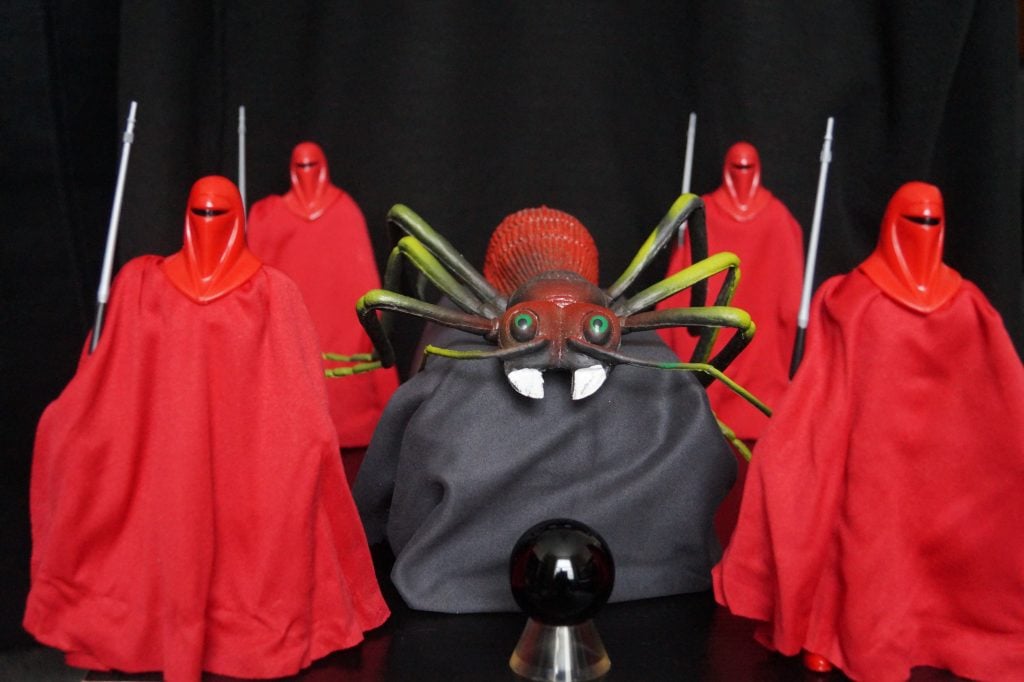Hello once again to another weekly update on my three current ant colonies. They consist of Lasius niger, Lasius umbratus and Myrmica rubra.
Lasius niger
This colony recently celebrated its two-month birthday, that is from the birth of the first worker ants. If we were to go from the day the queen laid her first egg, then we are talking, four months. The queen herself is somewhere in the region of five to six months old.
There are still about 20 workers, with just as many larvae clustered together on the floor of their test tube. I did see one cocoon a couple of weeks ago, but that has now vanished. So I am assuming that an adult worker eclosed around that time.
There has not been too much activity over the past few weeks. The ambient temperature in the Ant Room has been dropping as Autumn progresses. Just 5 or 6 weeks left until Winter. The Lasius niger larvae may cease to develop as the colder weather sets in, as many species over-winter their brood. I deliberately try to mimic the temperature within the Ant Room to that outside. I do this by shutting off the heat and having the window open as much as I can. This encourages them to hibernate, or at least go into some semi-hibernation phase. It usually works quite well.
They still have not discovered their nesting box yet, or at least from what I have seen. I have seen a worker on several occasions examine the entrance port to the nesting box. But so far none have ventured into the tube. I could attach the test tube directly to the nesting box, but I would rather leave things as they are. Let them discover the nesting box in their own proper time.
Lasius umbratus
As regular readers of this blog, as well as those who read my Twitter feed, will know, I have provided the Lasius umbratus with a brand-new nesting box. I gifted them this new home a little less than three weeks ago. At first, the reception was manic, with many workers at once set to work in excavating a new nest. Things seemed to be going well for the first week. During the second week, the activity lessened to a much lower level, with now perhaps only 8-10 workers now digging.
The new nest consists of lots of tunnels, but few chambers. However, the worker ants do now appear to be concentrating on creating a couple of low ceiling chambers. That is why fewer ants are working on the new nest. “Too many chefs spoil the broth”, as they say.
Though they stay in the current nesting box, for now, they have moved out of the second, outer nesting box. This allows me to remove the empty box, clean it, refill it, and give it to the Lasius niger colony.
Myrmica rubra
The number of deaths in this colony over the past few weeks has slowed to zero now. It was quite worrying at first, but not so much now. The queen is still laying enough eggs to keep the colony at about 100 ants.
I have seen a fair number of winged males and queens present, though the workers kill the males. There is at least one winged queen still alive. I wish she was able to mate with males from her colony, and therefore boost the number of egg-laying queens. However, good genetics dictate that brothers and sisters of the ant world should not mate. Rather, they should seek out mates from neighbouring colonies.
Today I noticed that the sand in the Myrmica rubra nesting box was looking very dry. As a result, I hesitantly removed the lid to their nesting box, to add some water. I was lucky in that only one worker ant was present under the lid. I quickly added a few millimetres of water and sealed the lid once more.
That is all for now. I plan to draft an article for this blog page, on Thursday or Friday. I have not decided what topic should be yet. Thank you for reading. Feel free to add comments, observations or indeed ask questions if you wish. No ads or links, please.
